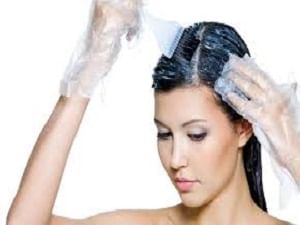Allergic Reaction To Hair Dye
Recently, a large section of our population has started using hair colours and hair dyes. Different shades of hair colours as well as dye enhances the looks and makes a person look younger. This contributes to the immense popularity of these products in the market. In the earlier period Henna or mehendi was used as a colouring agent for hair. It has gradually been replaced with a lot of synthetic dyes and colours.
Exposure to such dyes as well as colours has long been known to be a significant risk factor in the development of various skin conditions like allergic contact dermatitis as well as pigmentary changes.
Most of the hair dyes as well as hair colours have para-phenylenediamine (PPD) as the main important as well as potent allergen. (Allergy causing compound).
Exposure to PPD leads to allergic reactions and eczematous changes amongst the people using these dyes as well as the hair dressers who come in contact with these dyes and colours.
How to identify hair dye allergy?
Hair dye allergy can occur with a few minutes of applying the agent, or may also occur 1 to 2 days after the application. It generally starts as an itching or burning sensation. Redness or patches of red skin might be noted. The common areas involved are the forehead, neck, chin or the back of the ear. In case of hair dressers, the hands as well as forearms might be involved.
The reactions range from very mild to severe. In rare cases, anaphylactic reactions can also be noted in which the patient has difficulty in breathing. Immediate medical attention is needed in such cases.
How to manage?
Hair dye allergies are a common occurrence worldwide, and it leads to a lot of discomfort for the patient. The offending agent must be immediately washed or removed from the body.
Strong anti histaminics are prescribed along with a short course of oral steroids. Topical creams may also be prescribed depending upon the severity of the condition.
The patient has to be counselled never to use the particular hair dye or colour in future.
Hair dyes and hair colours are extremely popular as they help in enhancing the look of the person using it. However care should always be taken to prevent allergic reactions to the same.
In case of allergic reaction one should always consult a certified dermatologist and take the requisite treatment.




+1.svg)
